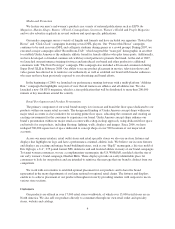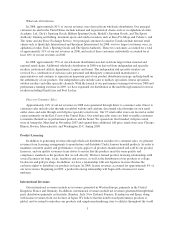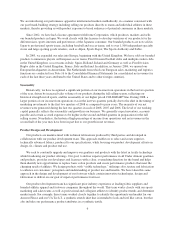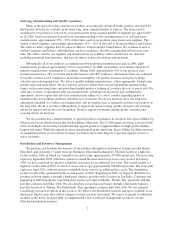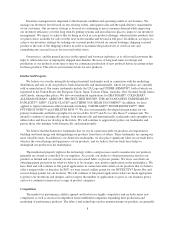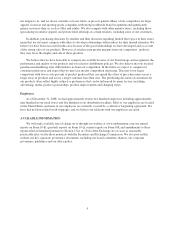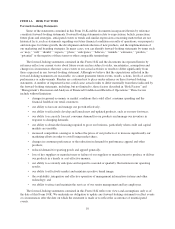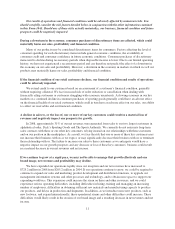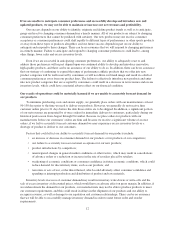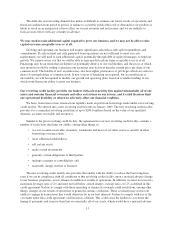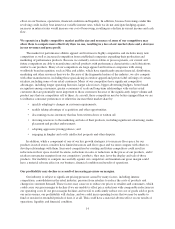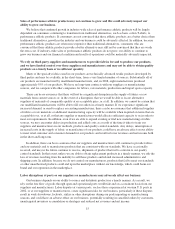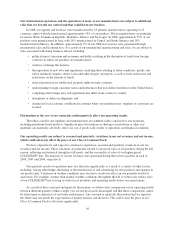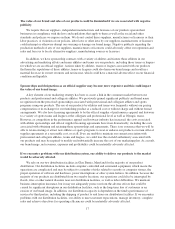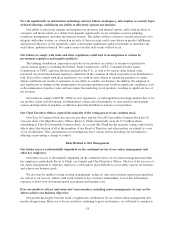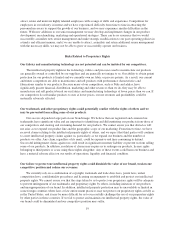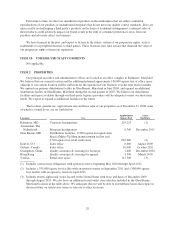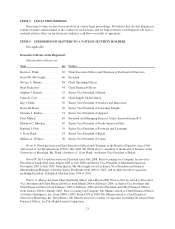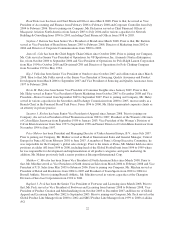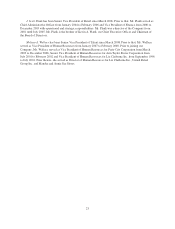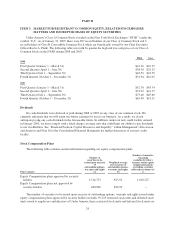Under Armour 2008 Annual Report Download - page 22
Download and view the complete annual report
Please find page 22 of the 2008 Under Armour annual report below. You can navigate through the pages in the report by either clicking on the pages listed below, or by using the keyword search tool below to find specific information within the annual report.effect on our business, operations, financial condition and liquidity. In addition, because borrowings under this
revolving credit facility bear interest at variable interest rates, which we do not anticipate hedging against,
increases in interest rates would increase our cost of borrowing, resulting in a decline in our net income and cash
flow.
We operate in a highly competitive market and the size and resources of some of our competitors may
allow them to compete more effectively than we can, resulting in a loss of our market share and a decrease
in our revenues and gross profit.
The market for performance athletic apparel and footwear is highly competitive and includes many new
competitors as well as increased competition from established companies expanding their production and
marketing of performance products. Because we currently own no fabric or process patents, our current and
future competitors are able to manufacture and sell products with performance characteristics and fabrications
similar to our products. Many of our competitors are large apparel and footwear companies with strong
worldwide brand recognition, such as Nike and adidas, which have significantly greater financial, distribution,
marketing and other resources than we do. Because of the fragmented nature of the industry, we also compete
with other manufacturers, including those specializing in outdoor apparel and private label offerings of certain
retailers, including some of our retail customers. Many of our competitors have significant competitive
advantages, including longer operating histories, larger sales forces, bigger advertising budgets, better brand
recognition among consumers, greater economies of scale and long-term relationships with our key retail
customers that are potentially more important to those customers because of the significantly larger volume and
product mix that our competitors sell to them. As a result, these competitors may be better equipped than we are
to influence consumer preferences or otherwise increase their market share by:
• quickly adapting to changes in customer requirements;
• readily taking advantage of acquisition and other opportunities;
• discounting excess inventory that has been written down or written off;
• devoting resources to the marketing and sale of their products, including significant advertising, media
placement and product endorsement;
• adopting aggressive pricing policies; and
• engaging in lengthy and costly intellectual property and other disputes.
In addition, while a component of one of our key growth strategies is to increase floor space for our
products in retail stores, retailers have limited resources and floor space and we must compete with others to
develop relationships with them. Increased competition by existing and future competitors could result in
reductions in floor space in retail locations, reductions in sales or reductions in the prices of our products, and if
retailers earn greater margins from our competitors’ products, they may favor the display and sale of those
products. Our inability to compete successfully against our competitors and maintain our gross margin could
have a material adverse effect on our business, financial condition and results of operations.
Our profitability may decline as a result of increasing pressure on margins.
Our industry is subject to significant pricing pressure caused by many factors, including intense
competition, consolidation in the retail industry, pressure from retailers to reduce the costs of products and
changes in consumer demand. These factors may cause us to reduce our prices to retailers and consumers, which
could cause our gross margin to decline if we are unable to offset price reductions with comparable reductions in
our operating costs. If our gross margin declines and we fail to sufficiently reduce our cost of goods sold or grow
our net revenues, our profitability will decline, and we could incur operating losses that we may be unable to
fund or sustain for extended periods of time, if at all. This could have a material adverse effect on our results of
operations, liquidity and financial condition.
14


